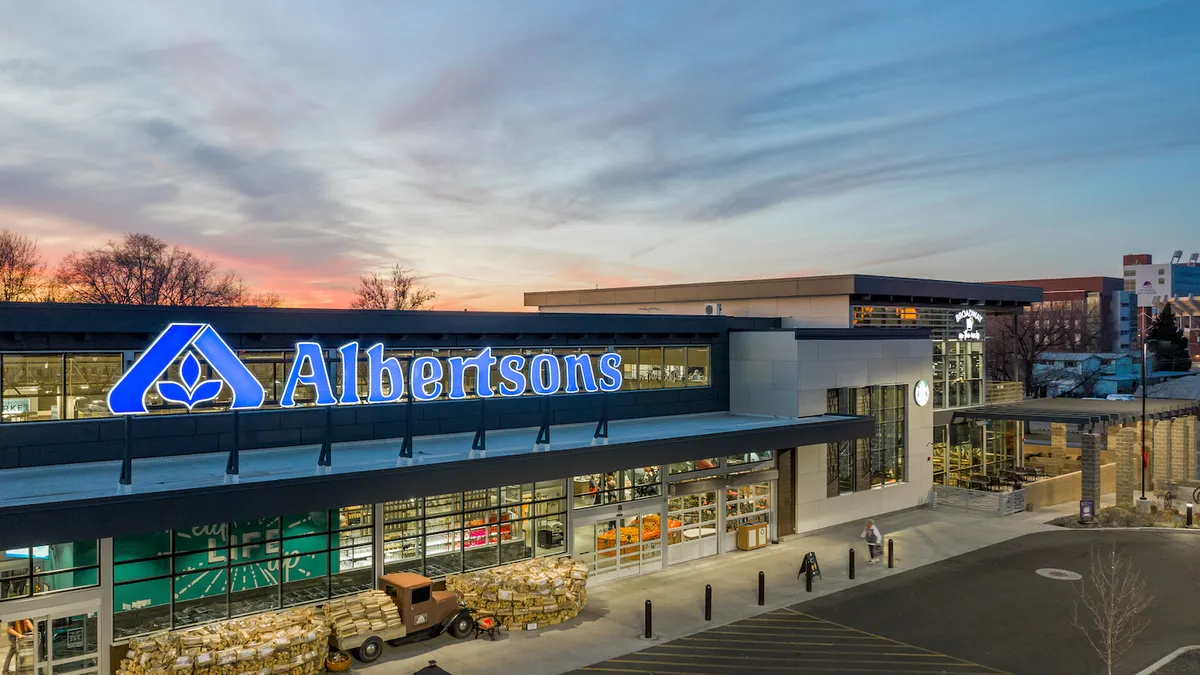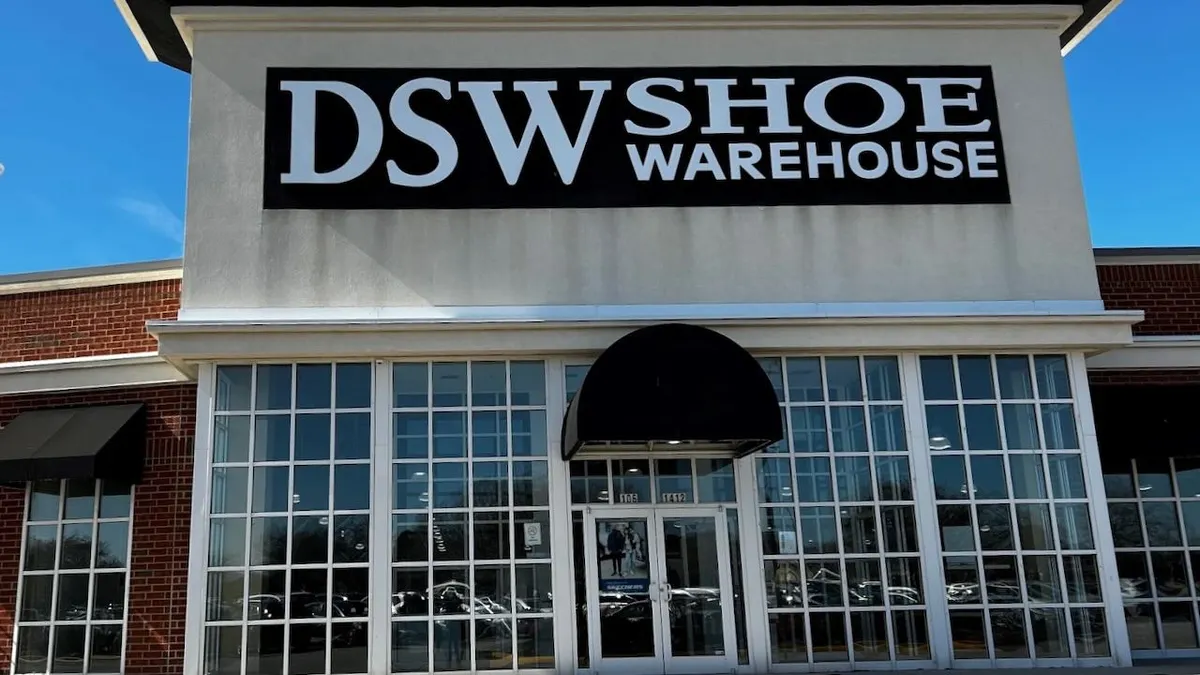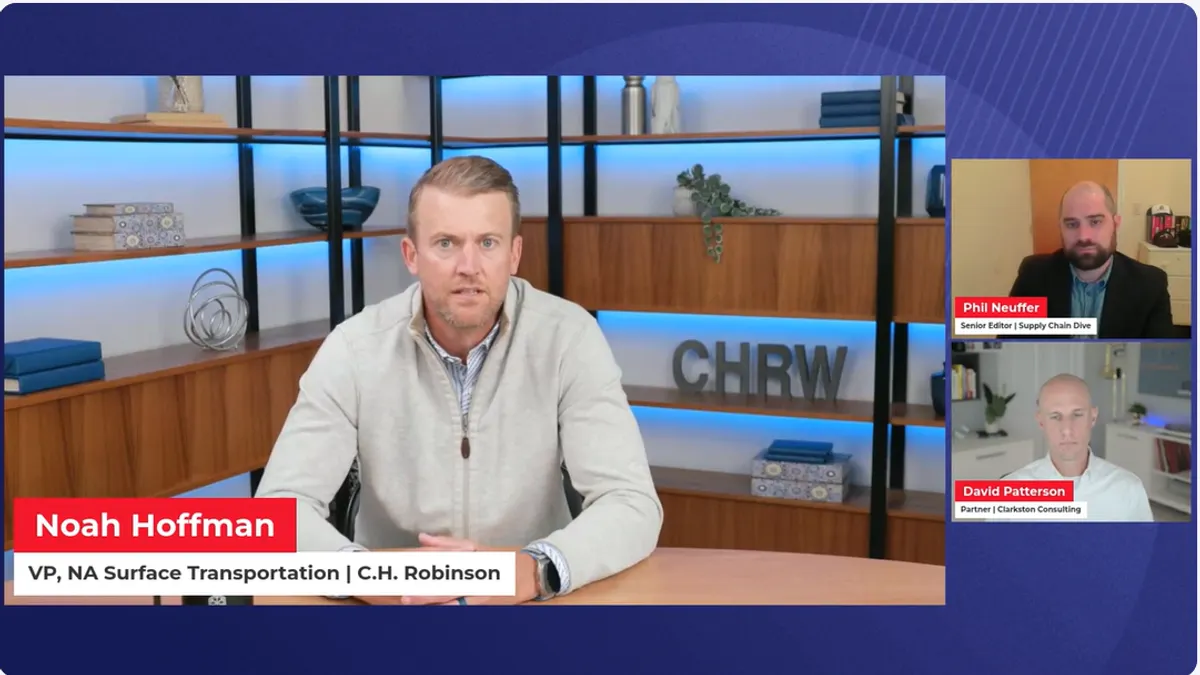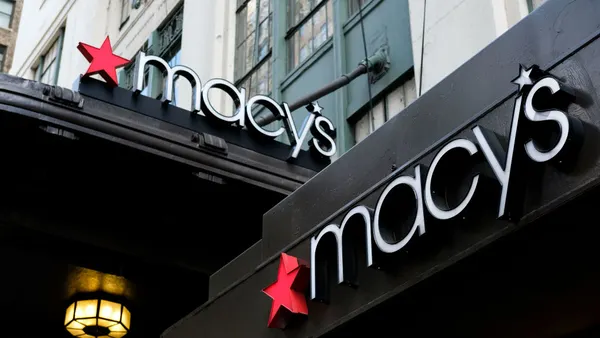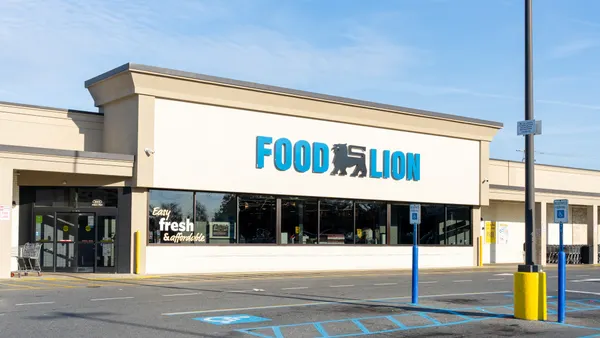Dive Brief:
- Albertsons expects 30% of its distribution volume to be automated by the end of 2025, CEO Vivek Sankaran said on a Jan. 8 earnings call.
- The grocery retailer is already finished implementing automation at three of its 22 dedicated distribution centers, according to Sankaran, with more to come early this year. It also plans to roll out a new warehouse management system across the company before 2026.
- “These supply chain initiatives improve in-stock conditions, differentiate our fresh quality, lower our cost to serve and improve our end-to-end data analytics capabilities,” Sankaran said.
Dive Insight:
Technology advancements, such as distribution automation, is a key driver of performance and productivity at Albertsons, Sankaran told analysts.
Improving productivity is a primary goal of the grocer as it seeks to compete with growing grocery footprints of national retailers like Walmart, Amazon and Costco, particularly in the wake of a failed merger with Kroger.
“We have continued to develop our productivity engine, designed to systematically improve the efficiency of our business and improve costs,” Sankaran said. The CEO added that Albertsons plans to deliver $1.5 billion in cost savings across the company over the next three years.
Albertsons is joining a growing list of regional grocery chains turning to automation, especially as Walmart bets big on the technology to continue picking up market share in the grocery space.
Giant Eagle opened its first automated micro-fulfillment center in Pittsburgh earlier this year, while Kroger, Albertsons former merger partner, attributed delivery sales growth to its automated fulfilment facilities.
Beyond its automation investments, Albertsons bulked up its e-commerce capabilities in recent years. The company, which has partnerships with Grubhub and Instacart, reported its investments drove e-commerce sales penetration to more than 7% of grocery revenue in Q3 of 2024. However, the company sees room for improvement.
“While we have grown this business significantly and faster than the market, it is still under-penetrated compared to industry benchmarks and is one of our biggest growth customer acquisition and customer retention opportunities,” Sankaran said.
This story was first published in our Operations Weekly newsletter. Sign up here.



